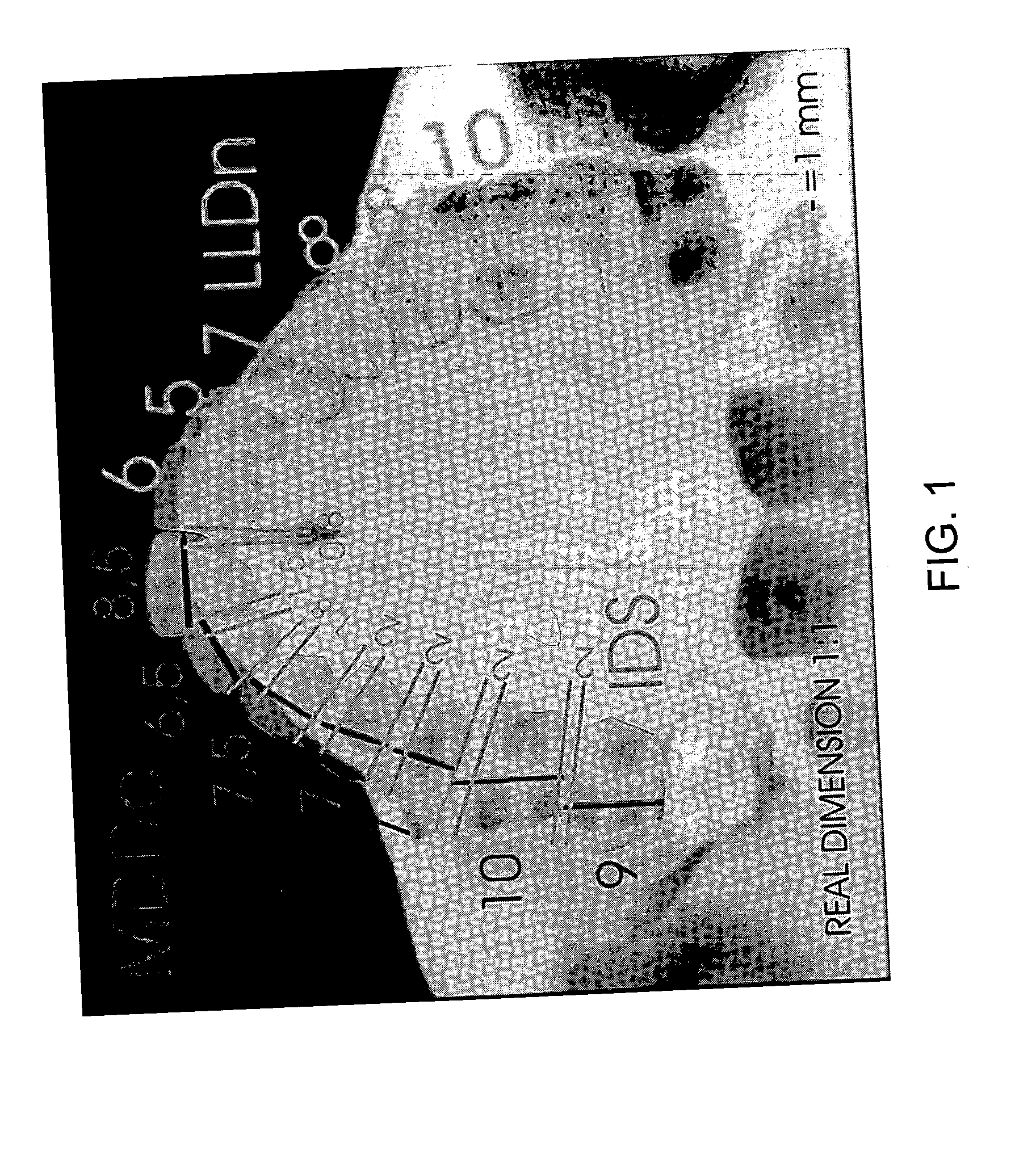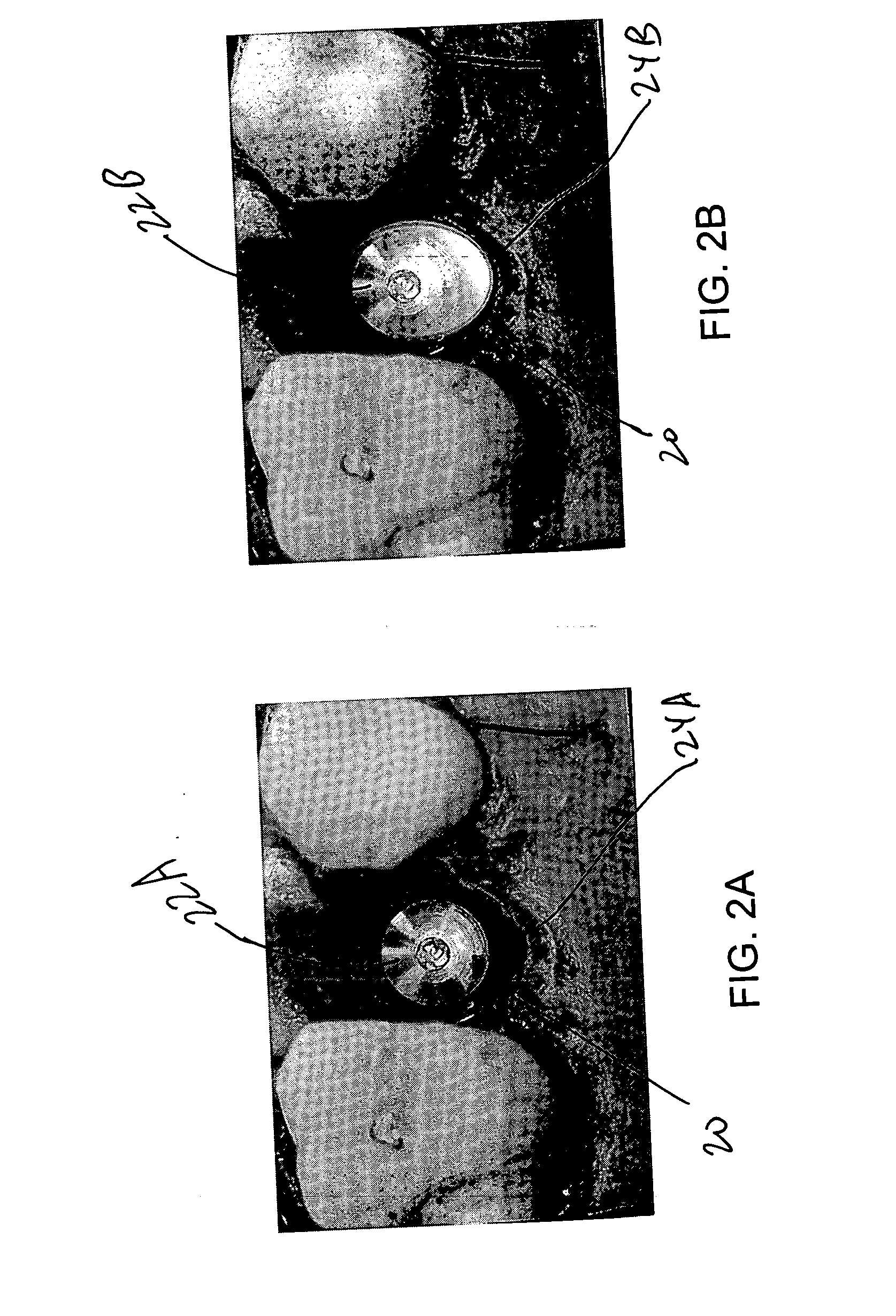Dental implants having anatomical emergence
a technology of anatomical emergence and dental implants, which is applied in the field of dental implants having anatomical emergence, can solve the problems of difficult to obtain primary stability and placement precision of cylindrical press-fit implants, and the gap between implants and sockets is small. achieve the effect of improving strength, maximizing inter-implant distance, and desirable aesthetics
- Summary
- Abstract
- Description
- Claims
- Application Information
AI Technical Summary
Benefits of technology
Problems solved by technology
Method used
Image
Examples
Embodiment Construction
[0030]FIG. 1 depicts a typical anatomical specimen of dentate maxillae. As shown, the teeth of both maxillae have been extracted, except for the third molar. Typically, extracted third molars are not replaced, and therefore, are unlikely candidates for ideal rehabilitation. The extracted teeth are depicted in phantom so that the sockets formed by extraction of the teeth may be seen in the figure. The outlines shown on the right maxilla (which is depicted on the left side of FIG. 1) represent the respective shapes of the sockets at the emergence.
[0031] Certain measurements, which are described in Ash, Dental Anatomy, Physiology, and Occlusion, 6th ed., 1984, are indicated on the anatomical specimen. Typical values are provided for crown-level mesiodistal diameter MDDc, neck-level mesiodistal diameter MDDn, and neck-level labiolingual diameter LLDn. Typical interdental space (IDS) values are also provided. All values are provided in millimeters. It should be understood that the inter...
PUM
 Login to View More
Login to View More Abstract
Description
Claims
Application Information
 Login to View More
Login to View More - R&D
- Intellectual Property
- Life Sciences
- Materials
- Tech Scout
- Unparalleled Data Quality
- Higher Quality Content
- 60% Fewer Hallucinations
Browse by: Latest US Patents, China's latest patents, Technical Efficacy Thesaurus, Application Domain, Technology Topic, Popular Technical Reports.
© 2025 PatSnap. All rights reserved.Legal|Privacy policy|Modern Slavery Act Transparency Statement|Sitemap|About US| Contact US: help@patsnap.com



